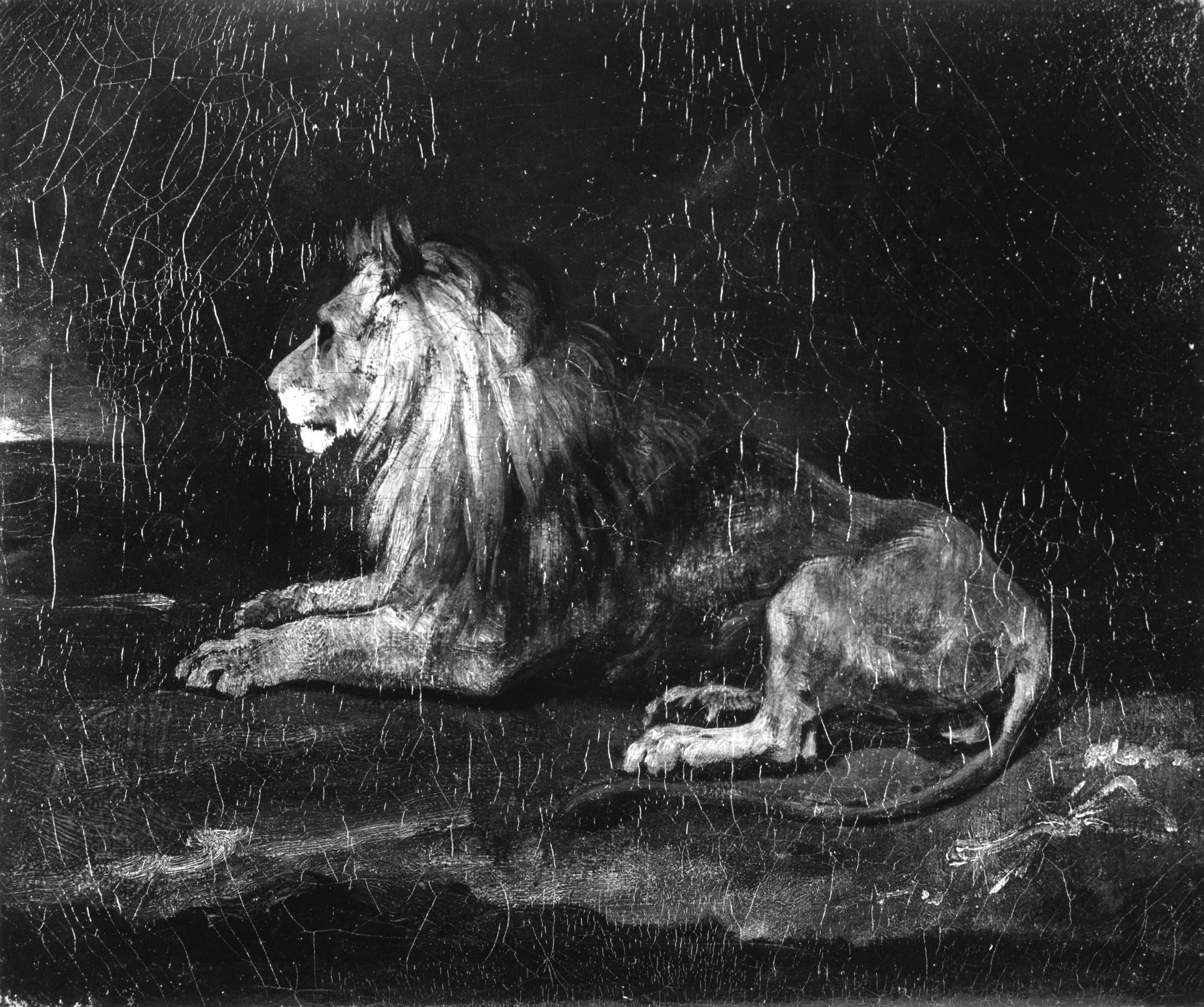Lion in Repose
(18th and 19th Centuries )
The reclining lion, facing left, is posed against a dark ground. A number of paintings of resting lions in similar backgrounds have been associated with Géricault. These include "Family of Lions," in which a number of animals rest in a lair, a composition known through two versions, one in the Louvre, R.F. 3962 and the other in a private collection, Paris, as well as the "Head of a Lioness," Louvre, MNR 137 and "Family of Lions," formerly collections Schiekler and J. D'Harcourt, Sale, Palais Galliera, Paris, November 28, 1971, no. 18. It is known that Géricault painted lions in the London zoo in 1820-21, inspired probably by George Stubbs' and James Ward's animal subjects. One of the lion's heads in a drawing in the Musée Bonnat, Bayonne, no. 2118, bears a striking resemblance to the animal in this painting.
Provenance
Provenance (from the French provenir, 'to come from/forth') is the chronology of the ownership, custody, or location of a historical object. Learn more about provenance at the Walters.
William T. Walters, Baltimore, between 1887 and 1893 [mode of acquisition unknown]; Henry Walters, Baltimore, 1894, by inheritance; Walters Art Museum, 1931, by bequest.
Conservation
| Date | Description | Narrative |
|---|---|---|
| 10/30/1984 | Examination | examined for condition |
Geographies
France (Place of Origin)
Measurements
H: 14 15/16 x W: 18 1/2 in. (38 x 47 cm)
Credit Line
Acquired by William T. Walters, 1887-1893
Location in Museum
Not on view
Accession Number
In libraries, galleries, museums, and archives, an accession number is a unique identifier assigned to each object in the collection.
In libraries, galleries, museums, and archives, an accession number is a unique identifier assigned to each object in the collection.
37.882


